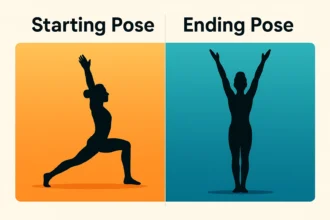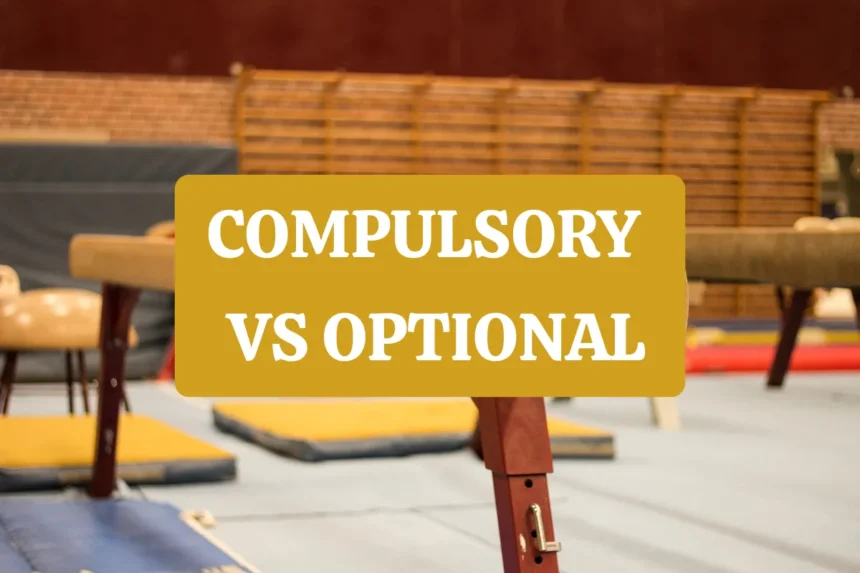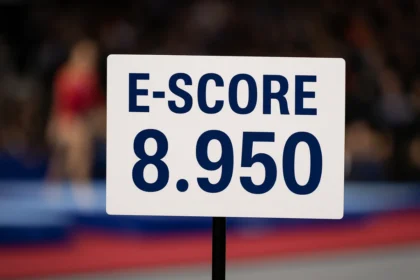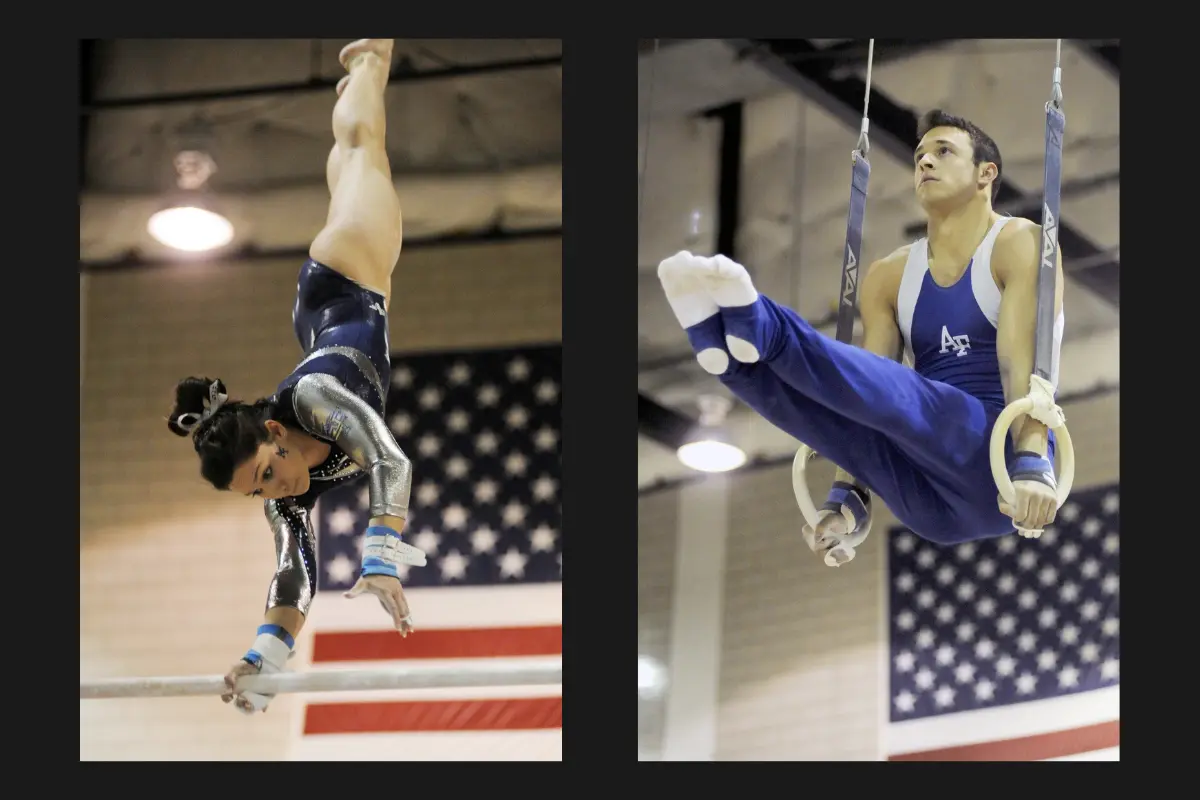In gymnastics, athletes follow a structured path that begins with compulsory routines and eventually leads to optional levels. While both are part of the same journey, they serve very different purposes and offer distinct experiences.
Understanding how these two phases work—and how they connect—can help parents and athletes better navigate the road ahead.
Compulsory Gymnastics – Technique First, Personality Later
In the USA Gymnastics Development Program, Levels 1 through 5 are called compulsory levels, and they focus entirely on building a rock-solid foundation. Every gymnast performs the same nationally choreographed routine, down to the precise placement of hands and timing of a head turn. There’s no room for improvisation.
All routines begin with a 10.0 start value, and judges score solely on execution. That means the tiniest form breaks—like bent knees or bobbles—can separate gold from fourth place. The sameness across routines helps judges focus on precision and coaches reinforce clean basics: tight cores, straight legs, and long body lines.
But compulsories aren’t just about polish. They’re also about safety. Skills are challenging enough to feel like “real gymnastics”—think back handsprings, kips, and handspring vaults—but still appropriate for young athletes, many of whom train just 6 to 12 hours a week.
Think of this stage like handwriting drills before writing an essay. You need a clean alphabet before you can tell your story.
Optional Gymnastics – Freedom with Responsibility
Beginning at Level 6 and continuing through Level 10, gymnasts enter the world of optional gymnastics. Here, routines are no longer scripted. While the Code of Points still requires certain skills, how a gymnast meets those requirements is entirely up to her and her coach.
This is where routines become customized. Each one earns a start value based on difficulty. A gymnast who stacks enough B, C, or D-level skills—like giants on bars, layout step-outs on floor, or back handspring-layout series on beam—can start from a 10.0. Skip the difficulty, and you start lower, even before deductions come into play.
Optional routines are also a blank canvas for self-expression. Gymnasts can choose their music, create choreography that plays to their strengths, and decide how to structure their performance.
But that freedom brings pressure. By Levels 9 and 10, many gymnasts are training 20 to 30 hours a week. The skills are harder. The mental game is tougher. And consistency matters just as much as creativity.
In this phase, gymnasts aren’t just performers—they’re co-authors of their routines.
Compulsory vs Optional Gymnastics at a Glance
| Aspect | Compulsory (Levels 1–5) | Optional (Levels 6–10) |
|---|---|---|
| Routine Design | Nationally scripted for all | Individually choreographed |
| Judging Focus | Execution only; fixed 10.0 start | Difficulty + Execution; variable start value |
| Training Load | ~6–12 hours per week | 12–30 hours per week |
| Skill Ceiling | Foundational A/B skills | Higher-difficulty B–E skills before Elite |
| Learning Curve | Master basics and discipline | Strategy, creativity, risk management |
Data adapted from GymnasticsHQ and Gold Medal Gymnastics Center.
Crossing the Bridge – What the Transition Really Feels Like
The jump to Level 6 is a pivotal moment—part liberation, part reality check. Gymnasts are suddenly expected to make decisions that shape their routines and competitive future.
They must:
- Choose skills that match their strength, flexibility, and confidence.
- Learn how choreography counts and music cues impact performance.
- Understand that a fall on a new skill could erase their “difficulty edge.”
To prepare for that leap, coaches spend the final compulsory year drilling advanced technique, shaping future skills into pit landings, and teaching gymnasts how to “count” routines—that is, calculate which skills contribute to start value.
A smooth transition to optionals doesn’t just reflect readiness—it often predicts long-term success more than early medals ever could.
Parent Checklist – Costs, Commitments, and Mindset Shifts
As your gymnast crosses into the optional world, changes extend far beyond the gym. Here’s what families should prepare for:
- Time & Tuition: Training hours increase, and so do costs—custom choreography, music edits, and travel all enter the picture.
- Meet Culture: Scores become more variable. Routines with flair can earn big—but also come with harsher penalties for mistakes.
- Mental Game: Optional skills are scarier. Spotting, pit training, and even basic sports-psych tools like visualization or breathing drills become crucial.
- Long-Term Goals: Optional levels feed two key tracks—college gymnastics (via Level 10) and the Elite/FIG circuit. Knowing which path your gymnast prefers can shape training decisions and competition strategy.
Conclusion – From Basics to Brilliance
Compulsory and optional gymnastics aren’t just steps on a ladder—they’re distinct phases that shape an athlete’s journey. Compulsories build the core: strength, control, discipline. Optionals unlock the artistry, decision-making, and personal growth that elevate a gymnast’s performance.
With the right support, gymnasts can thrive in both phases—first learning the rules, then rewriting them in their own style. From the uniform to the unique, it’s all part of the same climb.













